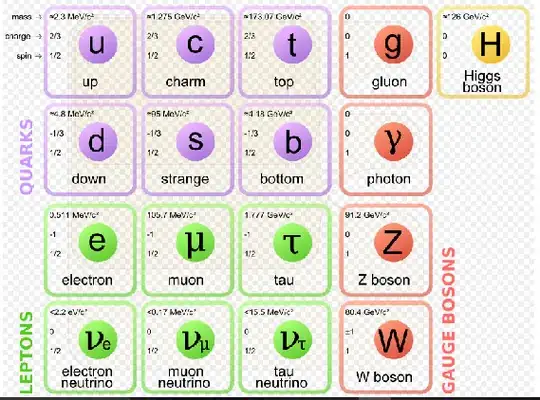Is it possible for a particle to exist such that its mass acts as a gravitational source, without it exerting any type of repulsive nuclear/electromagnetic forces? Or do all particles with a mass, also exert repulsive forces. If so is there a way to unify the gravitational force with, say, the nuclear force, making gravity repulsive at very close distances.
3 Answers
There are particles that do not exert repulsive forces. Photons, for example, are not charged (and so do not repel anything) but do have a gravitational field.
- 11,450
Mainstream physics at present is based on Special Relativity and quantum mechanics as the underlying framework of all observations in nature, at laboratory accessible conditions (Planetary and larger dimensions rquire General Relativity).
You ask:
Is it possible for a particle to exist such that its mass acts as a gravitational source, without it exerting any type of repulsive nuclear/electromagnetic forces?
The elementary particles when interacting , interact with the fundamental forces, there will be attractive and repulsive forces according to the type of elementary particle in the table.
You ask:
Or do all particles with a mass, also exert repulsive forces.
The neutrinos, which have very small masses will be attracted by the gravitational field and not repulsed.
You ask:
If so is there a way to unify the gravitational force with, say, the nuclear force, making gravity repulsive at very close distances.
The unification of all forces is the holy Grail of theoretical physics, and in this link you will find the continuing attempts of theorists for a Theory of Everything.
The unification is much more demanding than just the attraction and repulsion you envisage.
- 236,935
Particles with mass only don't exist. Every particle is basically massless and needs a form of charge to become massive. Massless particles can't get mass from gravitational interaction (though the strength of gravity is not known at very small distances from a particle). Mass is not a charge like the electric or color charge. It's what, together with energy, determines the structure on which the three basic interactions are defined. Which is why it's difficult to create a quantum field for the gravitational interaction since the quanta have to work on spacetime to make it curve (while the three gauge fields for the basic interactions work through spacetime).
